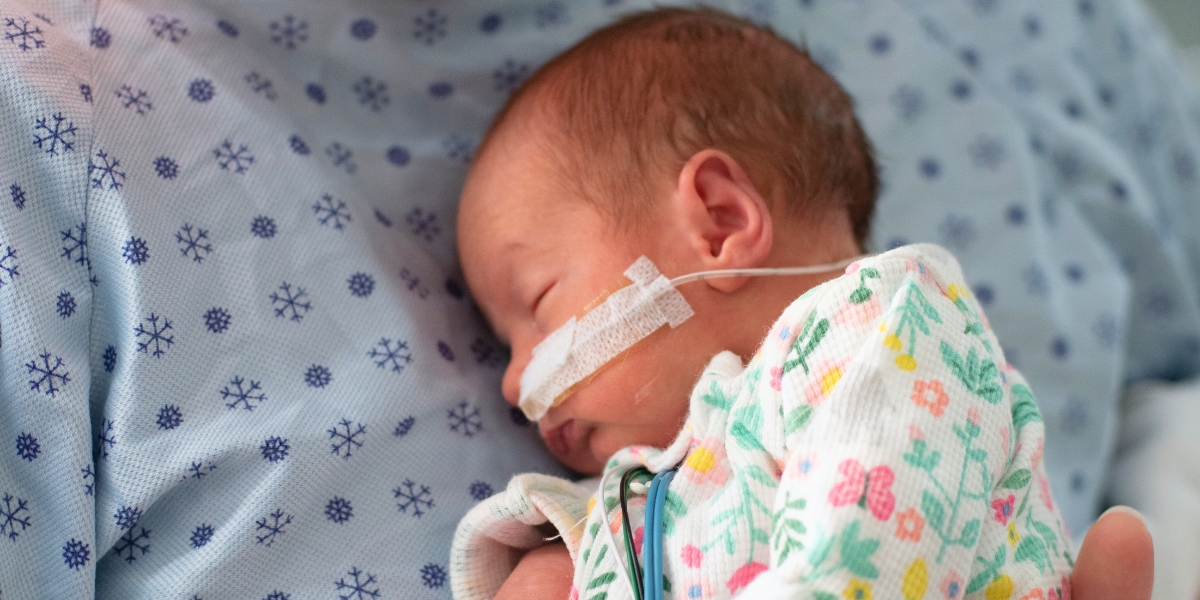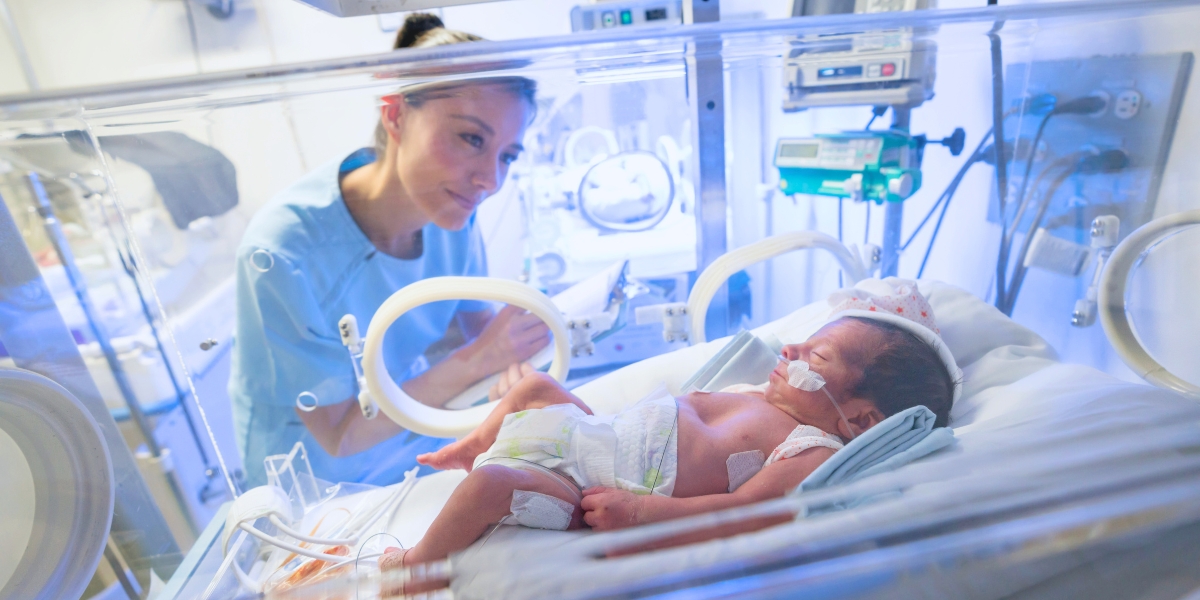
Each year in Canada, thousands of babies are born very prematurely — before 32 weeks gestation — and many require respiratory support in their first days and weeks of life. While this support is often life-saving, researchers are still learning how different types of respiratory care affect the developing brain.
A recent study led by Dr. Alexander Weber and Dr. Ruth Grunau, published in NMR in Biomedicine, explores an innovative way to measure how preterm infants’ brains use oxygen, using advanced MRI technology that is both safe and noninvasive. This novel approach provides a more detailed picture of brain oxygen metabolism and could help researchers and clinicians better understand how different types of respiratory support impact long-term brain health in the most vulnerable newborns.
We spoke with Dr. Weber, an MRI biomedical engineer, assistant professor in the Department of Pediatrics at the University of British Columbia (UBC), and investigator at BC Children’s Hospital Research Institute (BCCHR) — to learn how his team’s work is paving the way for more informed, personalized neonatal care.
What inspired this study?
During my postdoctoral training, I started working on a type of MRI scan that’s sensitive to magnetic susceptibility — essentially, how different tissues respond to a magnetic field. This technique can detect things like brain bleeds and iron deposits, but I was interested in whether it could also be used to quantify oxygenation in the brain.
I had the chance to work with a visiting clinician who had MRI scans of newborns with brain injuries, and we started exploring whether this technique could give us better insight into oxygen use in the brain. When I joined UBC and BCCHR as a faculty member, I wanted to build on that early work and develop a fuller picture of brain oxygen metabolism in very preterm babies — especially in relation to how long they were on different types of breathing support in the NICU.*
Why is brain oxygen consumption important in very preterm babies?
The brain is an incredibly energy-hungry organ, and oxygen is a key ingredient in energy production. In newborns, and especially in very preterm infants, the brain is growing and wiring itself at a rapid pace. Any interruption in oxygen delivery during this time can affect how the brain develops, not just in the short term, but potentially across a person’s life.
By better understanding how the brain uses oxygen during this early stage, we hope to identify opportunities to support healthier development and improve long-term outcomes.

What did your study find?
Our study focused on understanding how different forms of respiratory support — from more invasive ventilation to noninvasive ventilation to no support at all — were associated with brain oxygen metabolism in very preterm babies. To do this, we used a novel MRI approach that allows us to measure oxygen consumption across the entire brain in a safe and noninvasive way.
This method gives us a more complete picture than traditional tools by combining data on blood flow, oxygen saturation in the brain’s arteries and veins, and the oxygen-carrying capacity of the blood. It’s one of the few techniques that can give us detailed, regional information about how the brain is actually using oxygen, not just how much is delivered.
By using this approach, we were able to look at patterns of brain oxygen metabolism in infants after they had been discharged from the NICU and explore how those patterns related to their earlier respiratory support.
What surprised you most about your study’s results?
We initially thought that babies who required invasive respiratory support — usually those who are more seriously ill — would show reduced brain oxygen metabolism. But we didn’t find a clear correlation there. That may be because many of the babies in our study didn’t spend long periods of time on invasive respiratory support.
Another unexpected finding was that breathing room air — in other words, having no respiratory support — wasn’t necessarily better. You might assume that needing no respiratory support at all would be a sign of better brain health, but we actually saw lower oxygen metabolism in those babies. Again, this raises questions about whether some infants might benefit from more respiratory support instead of less, but we need more data.
You mentioned your novel MRI approach earlier. Could this become part of routine care?
Right now, it’s still a research tool, partly because it requires taking the baby out of the NICU for an MRI — something we try to avoid whenever possible. But the exciting part is that this type of scan is already used when a clinical MRI is ordered for preterm infants. We just need to tweak how we acquire and analyze the data.
So while it may not be part of day-to-day monitoring yet, I do think this approach has real potential to become part of clinical decision-making in the future.

What’s next for this research?
I’d love to see this MRI technology used to track brain oxygenation in real time during a baby’s stay in the NICU, as a way to help care teams adjust respiratory support based on what’s happening in the brain. Are we delivering too much oxygen? Not enough? Is one part of the brain not responding the way we expect? The more detailed data we have, the better we can tailor care for each baby.
It would be great for clinicians to have more access to better tools for measuring brain health — tools that don’t just show whether there’s an injury, but help us understand how the brain is actually functioning and developing. That kind of insight could make a huge difference in how we support preterm babies, both in the NICU and once they go home. Ultimately, the goal is to identify problems earlier and more accurately, so we can intervene sooner and support the best possible outcomes.
How does your research help children live their best lives?
Even as the overall birth rate in Canada is declining, the rate of preterm birth is rising, and more of these babies are surviving thanks to advances in care. My hope is that this research helps us understand their brains more deeply and gives us tools to support their development from day one.
By identifying risks early and tailoring care more precisely, we can help more children grow up with fewer complications, fewer chronic conditions, and more opportunities to thrive.
*Please note that the NICU mentioned in this Q&A is located at BC Women’s Hospital + Health Centre.
*******
This Q&A was inspired by our Best Lives podcast episode titled, “Transforming neonatal care through MRI innovation.”
Are you looking for the latest in pediatric research? Check out our podcast — Best Lives — on Apple Podcasts, Spotify, or wherever you get your podcasts!




